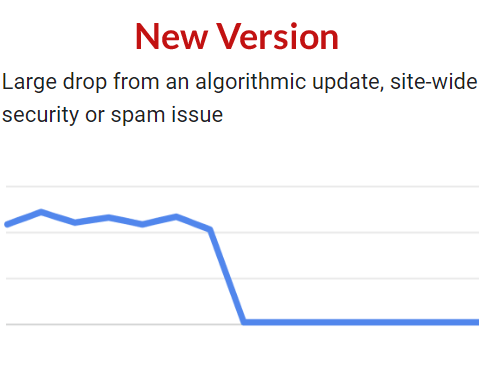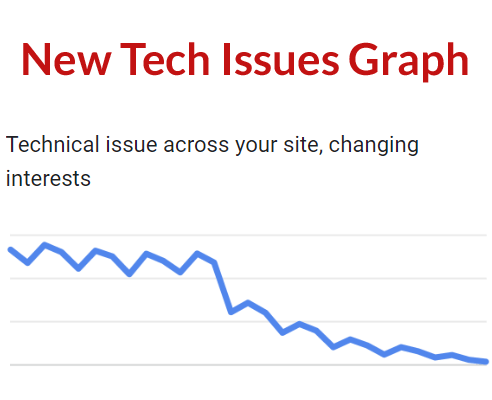
Google's Latest Guide on Addressing Ranking Drops

Discover the latest insights from Google's updated documentation on diagnosing and resolving ranking drops to enhance your website performance.
Google's Updated Guidance on Debugging Ranking Drops
Google recently released an updated version of their guidance, which includes five changes on how to debug ranking drops. The new version is more comprehensive, with over 400 additional words that specifically address both small and large ranking drops. While some may argue about certain changes, overall, the revised version is seen as an improvement from its predecessor.
Change #1: Downplaying the Importance of Fixing Traffic Drops
In the revised version of the documentation, Google made changes to the opening sentence to convey less optimism about recovering from an algorithmic traffic drop. They also combined two sentences into one for clarity.
Previously, the documentation mentioned that most traffic drops could be reversed, but identifying the reasons for a drop was not easy. However, in the updated version, the part about reversibility was removed.
A drop in organic Search traffic can occur due to various reasons, but many of them can be rectified. Understanding the exact cause of the decline on your site may not be immediately clear.
Now there’s no hope offered for “most of them can be reversed” and more emphasis on understanding what happened is not straightforward.
This is the new guidance
“A drop in organic Search traffic can happen for several reasons, and it may not be straightforward to understand what exactly happened to your site.”
Change #2 Security Or Spam Issues
Google updated the traffic graph illustrations so that they precisely align with the causes for each kind of traffic decline.
The previous version of the graph was labeled:
The previous label "Site-level technical issue (Manual Action, strong algorithmic changes)" was problematic because manual actions and strong algorithmic changes are not actually technical issues. The new version addresses this issue.
The updated version now reads:
“Large drop from an algorithmic update, site-wide security or spam issue”
A line graph labeled "new version" showing a significant ranking drop following a Google update, related to a site-wide security or spam issue.
Change #3 Technical Issues
There’s one more change to a graph label, also to make it more accurate.
This is how the previous graph was labeled:
“Page-level technical issue (algorithmic changes, market disruption)”
The updated graph is now labeled:
Technical issues are affecting your entire site, while interests among users are evolving. The graph and label now focus on a sitewide transformation, with "changing interests" encompassing a broader spectrum of changes compared to market disruptions. This term not only includes instances where a new product renders an old one outdated or less appealing, but also accounts for products that fall out of fashion or lose their trendiness.
Graph titled "Google updates impact graph" showing a descending blue line, indicating a decrease in technical issues across a site or changing interests.
Change #4 Google Adds New Guidance For Algorithmic Changes
The most significant change is the addition of a new section dedicated to algorithmic changes, which has replaced two smaller sections. One section used to focus on policy violations and manual actions, while the other covered algorithm changes.
The previous version of this particular section was only 108 words long. However, the updated version now contains a much more detailed 443-word explanation.
A section that’s particularly helpful is where the guidance splits algorithmic update damage into two categories.
Two New Categories:
Small drop in position? For example, dropping from position 2 to 4.
Large drop in position? For example, dropping from position 4 to 29.
The two new categories are spot on and match what I've observed in search results for websites that have seen a drop in rankings. The factors causing a site to move up or down within the top ten are distinct from those leading to a complete drop out of the top ten.
I disagree with the advice given for significant drops. While it's a good idea to examine your site for major ranking decreases, this may not always be the issue. In some instances, the site itself is not the problem, and less experienced SEOs may struggle to identify and address the underlying issues. Suggestions like enhancing EEAT, including author bios, or submitting link disavows won't resolve the root cause when the site itself is not the problem. In certain scenarios, the issue lies elsewhere.
Here is the new guidance for debugging search position drops:
“Algorithmic update
Google is constantly making improvements to how it evaluates content and adjusts its search ranking and serving algorithms accordingly. This means that both core updates and smaller updates could impact the performance of some pages in Google Search results. If you're curious about any changes, you can find information on our list of ranking updates page.
If you notice a decrease in traffic, it's essential to consider that it may be a result of an algorithmic update rather than a problem with your content. To figure out if any adjustments are needed, take a look at your top pages in Search Console and analyze their rankings.
Small drop in position? For example, dropping from position 2 to 4.
Large drop in position? For example, dropping from position 4 to 29.
Just remember, positions in Google search results are not set in stone. They can change because the internet is always evolving with fresh content. This evolution can lead to either improvements or decreases in organic search traffic.
If you notice a slight decrease in your position in search results, don't panic. It's normal for rankings to fluctuate due to the dynamic nature of the open web. Just keep monitoring and adjusting your strategies accordingly.
Sometimes, a small drop in position can occur when there is a slight change in ranking among the top search results. For instance, going from position 2 to 4 for a specific search query. This may lead to a noticeable decrease in traffic in Search Console, even if there is no significant change in impressions.
It is normal for small fluctuations in position to happen randomly, including moving back up in ranking without any action required on your part. Therefore, we suggest refraining from making drastic changes if your page is already doing well in terms of performance.
Large drop in position
A large drop in position is when you see a notable drop out of the top results for a wide range of terms (for example, dropping from the top 10 results to position 29).
Make sure to assess your entire website as a whole, not just individual pages, to ensure it is user-friendly, reliable, and valuable. Changes made to your site may not show immediate results; some changes can take effect in a few days, while others may take several months. For instance, it might take a few months for search engines to recognize that your site is now providing helpful content consistently. It is advisable to wait a few weeks before checking your site in Search Console again to see if your efforts have positively impacted your ranking.
Remember, there is no guarantee that the modifications you make to your website will lead to significant changes in search results. If there is better content available, it will continue to rank highly with search engines.
Change #5 Trivial Changes
The rest of the changes are relatively trivial but nonetheless makes the documentation more precise.
For example, one of the headings was changed from this:
You recently moved your site
To this new heading:
Site moves and migrations
Google’s Updated Ranking Drops Documentation
Google recently updated their documentation on ranking drops, providing recommendations for addressing large algorithmic drops. As someone with 25 years of SEO experience who has navigated through numerous Google algorithm updates, I believe that while the recommendations may be helpful for some cases, they may not be as effective for others. In the past, Google's guidance used to be that sometimes there is nothing to fix, but the current documentation is a step in the right direction, although there is still room for improvement.
Read the new documentation here:
Debugging drops in Google Search traffic
Review the previous documentation:
Internet Archive Wayback Machine: Debugging drops in Google Search traffic
Featured Image by Shutterstock/Tomacco
Editor's P/S:
Google's updated guidance on debugging ranking drops provides valuable insights into the complexities of search engine optimization. While the revised version offers more comprehensive information, it also highlights the challenges of identifying and addressing ranking declines. The removal of the assurance that "most traffic drops can be reversed" acknowledges the inherent difficulty in diagnosing and resolving these issues.
The addition of a dedicated section on algorithmic changes, along with the categorization of ranking drops into "small" and "large," provides a more nuanced understanding of the potential causes and appropriate responses. However, the advice given for significant drops may not always be applicable, as the root cause may lie beyond the website itself. Overall, the updated guidance serves as a reminder that ranking drops can be a complex and multifaceted issue, requiring careful analysis and a holistic approach to resolution.















